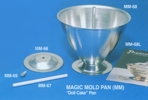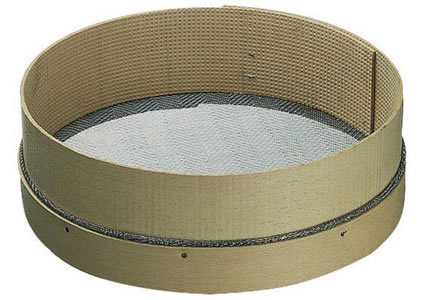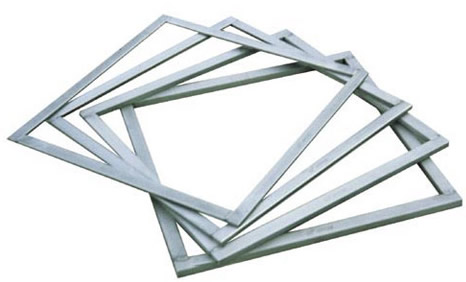
| Chocolates, Truffles, Candies, Confections | ||
Almond Chocolate Creams
CENTERS
CHOCOLATE COATING
Mix the chopped almonds with the fondant and vanilla; add confectioner's sugar, a little at a time, and knead the mass thoroughly, on a marble or large platter; shape into a long roll, then cut into small pieces of the same size. Shape these into balls a generous half inch in diameter and leave them about an hour to harden on the outside. Put the fondant for the coating and the chocolate (shaved or broken in pieces) in a double boiler (with hot water in the lower receptacle); add the vanilla and the water and heat until melted; take out the spoon and put in a dipping fork (a wire fork costing about ten cents) beat the fondant, to keep it from crusting and drop in a "center;" with the fork cover it with fondant; put the fork under it and lift it out, scrape the fork lightly on the edge of the dish, to remove superfluous candy, turn the fork over and drop the bon-bon onto waxed paper. Make a design with the fork in taking it from the candy. At once press half of a blanched almond on the top of the candy, or the design made with the fork will suffice. If at any time the coating be too thick, add a few drops of water. If any be left over, use it to coat whole nuts or cherries. FONDANT
Stir the sugar and water in a saucepan, set on the back part of the range, until the sugar is melted, then draw the saucepan to a hotter part of the range, and stir until the boiling point is reached; add the cream of tartar or acid and, with the hand or a cloth wet repeatedly in cold water, wash down the sides of the saucepan, to remove any grains of sugar that have been thrown there. Cover the saucepan and let boil rapidly three or four minutes. Remove the cover, set in the thermometer—if one is to be used—and let cook very rapidly to 240° F., or the soft ball degree. Wet the hand in cold water and with it dampen a marble slab or a large platter, then without jarring the syrup turn it onto the marble or platter. Do not scrape out the saucepan or allow the last of the syrup to drip from it, as sugary portions will spoil the fondant by making it grainy. When the syrup is cold, with a metal scraper or a wooden spatula, turn the edges of the mass towards the center, and continue turning the edges in until the mass begins to thicken and grow white, then work it up into a ball, scraping all the sugar from the marble onto the mass; knead slightly, then cover closely with a heavy piece of cotton cloth wrung out of cold water. Let the sugar stand for an hour or longer to ripen, then remove the damp cloth and cut the mass into pieces; press these closely into a kitchen bowl, cover with a cloth wrung out of water (this cloth must not touch the fondant) and then with heavy paper. The fondant may be used the next day, but is in better condition after several days, and may be kept almost indefinitely, if the cloth covering it be wrung out of cold water and replaced once in five or six days. Fondant may be used, white or delicately colored with vegetable color-pastes or with chocolate, as frosting for small cakes, or éclairs or for making candy "centers," to be coated with chocolate or with some of the same fondant tinted and flavored appropriately.
|
Index
of Recipes Cake
Recipes
|
|
| New Items, Hot Items & Everything in Between | ||

    
|
||
| We Are Direct Distributors for These Companies | ||
All rights reserved.
Copyright is held by Renee Shelton, Beach Cuisine Inc, or by respective owners.
|
|

